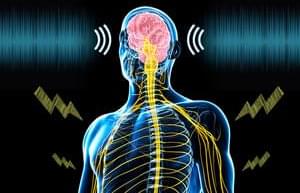Get the latest international news and world events from around the world.

Indonesia says Tesla strikes $5 billion deal to buy nickel products
JAKARTA, Aug 8 (Reuters) — U.S. carmaker Tesla (TSLA.O) has signed contracts worth about $5 billion to buy materials for their batteries from nickel processing companies in Indonesia, a senior cabinet minister told CNBC Indonesia.
Southeast Asia’s biggest economy has been trying to get Tesla to set up a production facility in the country, which has major nickel reserves. President Joko Widodo met with Tesla founder Elon Musk earlier this year to drum up investment. read more
“We are still in constant negotiation with Tesla … but they have started buying two excellent products from Indonesia,” Coordinating Minister for Maritime and Investment Affairs Luhut Pandjaitan said in an interview broadcast on Monday.

Human-machine interfaces work underwater, generate their own power
Wearable human-machine interface devices, HMIs, can be used to control machines, computers, music players, and other systems. A challenge for conventional HMIs is the presence of sweat on human skin.
In Applied Physics Reviews, scientists at UCLA describe their development of a type of HMI that is stretchable, inexpensive, and waterproof. The device is based on a soft magnetoelastic sensor array that converts mechanical pressure from the press of a finger into an electrical signal.
The device involves two main components. The first component is a layer that translates mechanical movement to a magnetic response. It consists of a set of micromagnets in a porous silicone matrix that can convert the gentle fingertip pressure into a magnetic field variation.
These New Technologies Will Revolutionize How We Travel FOREVER!
In today’s video we take a deep dive into the Future of Transportation. There has been no denying the fact that for several years in the past, the world has been undergoing massive changes, thanks to the advancement in technology. However, when it comes to transportation, the changes have not been that great. Transportations method such as cars, trains, ships, and planes have improved somewhat in functionality over time, but since their creation, they have in large part stayed the same.
With that being said however, when we look at the latest advancements in technology, it looks that the rate of change is about to make a dramatic acceleration. If you are interested in knowing what the future holds when it comes to transportation, then make sure to stick with us all the way till the end.
In this video, we will unveil some amazing future transportation technologies that without a doubt will absolutely blow your mind!
The technologies we look at will include; Earth-to-earth rockets, which will let you travel from one side of the earth to the other in less than 1 hour. This technology utilizes the famous Starship from Elon Musk’s SpaceX; Hyperloop Systems, which is a cutting-edge new technology that makes use of a vacuum-sealed tube to send passengers or freight at high speeds; Fully Autonomous Vehicles, looking into the various level of autonomation available today and what will be there in the future.
The video also covers Magnetic Levitation Trains, which is a type of high-speed ground transportation technology that uses magnetic fields that lets the train levitate and move without making contact with the ground. Lastly, we cover Flying Taxis and Hypersonic Air Travel. The flying taxis, like the ones being constructed by Volocopter, is a new mode of transportation that could very well take the world by storm in the future. The future of hypersonic air travel will let passenger again take to the sky in hypersonic aircraft similar to the Concord in the past, only much safer and considerably faster.
🔔 SUBSCRIBE — To make sure you don’t miss our upcoming videos
Neuralink Update — August 2022
00:00 Intro.
01:12 Elon Musk on psychedelics/ MDMA
01:58 Tim Urban on brain-machine interfaces.
02:46 Domino’s mind ordering app.
04:48 Elon tweet: digital vs biological.
05:47 Head Neurosurgeon, Dr. Matthew MacDougall.
08:02 Shivon Zilis & Elon Musk twins!!
09:05 Neuralink founder, Paul Merolla departs.
11:17 https://neuralink.com/careers/
11:35 DeepMind Documentary: https://youtu.be/kFlLzFuslfQ
Patreon: https://www.patreon.com/neurapod/
Neura Pod is a series covering topics related to Neuralink, Inc. Topics such as brain-machine interfaces, brain injuries, and artificial intelligence will be explored. Host Ryan Tanaka synthesizes informationopinions, and conducts interviews to easily learn about Neuralink and its future.
Please consider supporting by joining the channel above, or sharing my other company website with retirees: https://www.reterns.com/. Opinions are my own. Neura Pod receives no compensation from Neuralink and has no affiliation to the company.
Scripted/ voiced by: Ryan Tanaka.
Edited by: Omar Olivares.
#Neuralink #ElonMusk #Tesla
The Fermi Paradox: Technological Timebombs
Visit https://brilliant.org/isaacarthur/ to get started learning STEM for free, and the first 200 people will get 20% off their annual premium subscription.
We often wonder where all the aliens are out in the galaxy, but could it be that the technologies needed to get to space and travel the stars lead to inevitable catastrophe?
Visit our Website: http://www.isaacarthur.net.
Support us on Patreon: https://www.patreon.com/IsaacArthur.
Support us on Subscribestar: https://www.subscribestar.com/isaac-arthur.
Facebook Group: https://www.facebook.com/groups/1583992725237264/
Reddit: https://www.reddit.com/r/IsaacArthur/
Twitter: https://twitter.com/Isaac_A_Arthur on Twitter and RT our future content.
SFIA Discord Server: https://discord.gg/53GAShE
Listen or Download the audio of this episode from Soundcloud: Episode’s Audio-only version: https://soundcloud.com/isaac-arthur-148927746/the-fermi-para…-timebombs.
Episode’s Narration-only version: https://soundcloud.com/isaac-arthur-148927746/the-fermi-para…ation-only.
Credits:
The Fermi Paradox: Technological Timebombs.
Science & Futurism with Isaac Arthur.
Episode 355, August 11, 2022
Written, Produced & Narrated by Isaac Arthur.
Editors:
David McFarlane.
Jason Burbank.
Cover Art:


Study finds that sound plus electrical body stimulation has potential to treat chronic pain
A University of Minnesota Twin Cities-led team has found that electrical stimulation of the body combined with sound activates the brain’s somatosensory or “tactile” cortex, increasing the potential for using the technique to treat chronic pain and other sensory disorders. The researchers tested the non-invasive technique on animals and are planning clinical trials on humans in the near future.
The paper is published in the Journal of Neural Engineering, a highly regarded, peer-reviewed scientific journal for the interdisciplinary field of neural engineering.
During the experiments, the researchers played broadband sound while electrically stimulating different parts of the body in guinea pigs. They found that the combination of the two activated neurons in the brain’s somatosensory cortex, which is responsible for touch and pain sensations throughout the body.

FCC Cancels $886 Million in Funding for SpaceX’s Starlink
“The Commission determined that these applications failed to demonstrate that the providers could deliver the promised service,” the FCC said in a statement.
FCC Chairwoman Jessica Rosenworcel added: “We cannot afford to subsidize ventures that are not delivering the promised speeds or are not likely to meet program requirements.”
In December 2020, the FCC tentatively awarded $886 million to SpaceX to help its Starlink service supply high-speed broadband to 642,925 locations in 35 states. However, it came with a requirement (Opens in a new window) that SpaceX provide a long-form application about how Starlink would meet its obligations before the federal funding could be fully secured.